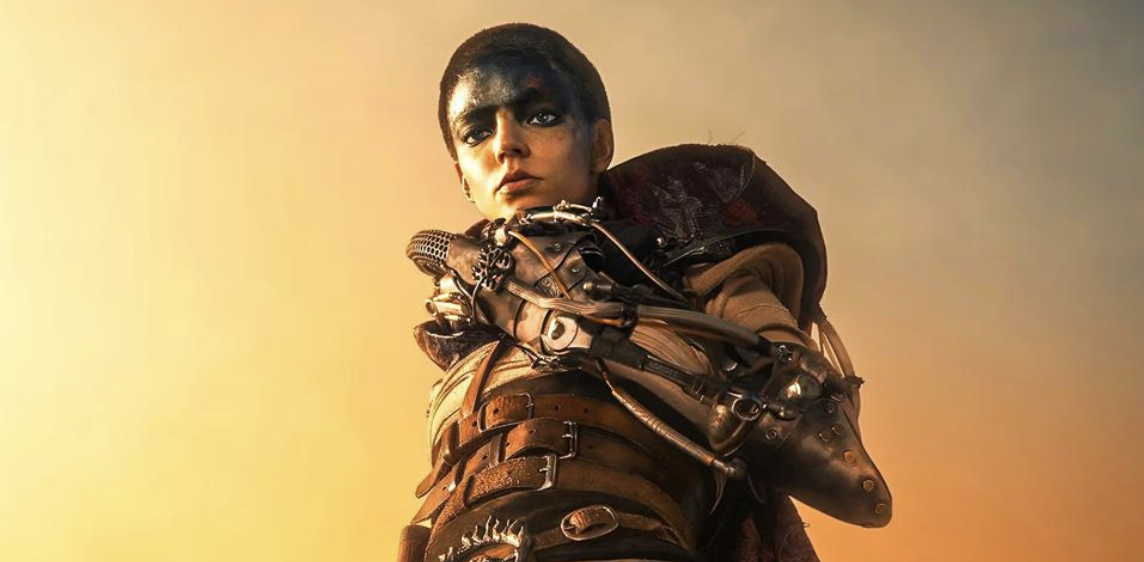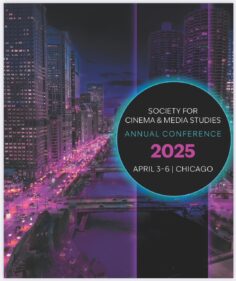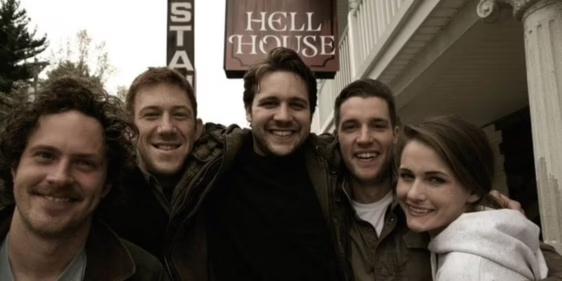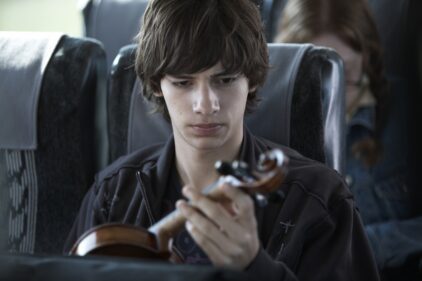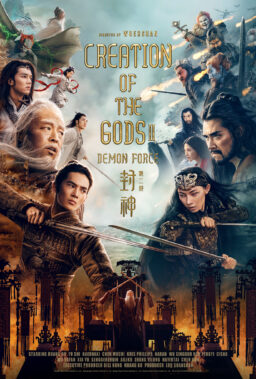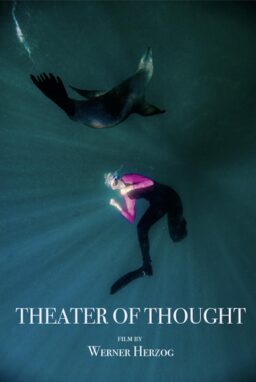Much has been written about the presumed box-office “failure” of “Furiosa.” The quote marks are intentional: its immediate predecessor in the series, “Mad Max Fury Road,” is widely considered one of the best action movies ever made. It’s the only film in the series to be nominated for multiple Oscars, and it was so expensive to make that when all was said and done, it could only be considered a modest financial success. (Movies of that scale are generally thought of as needing to make back three times what they cost to produce and market.)
What’s more important in the long haul, I think, is that “Furiosa” is a triumph from George Miller. It’s a film in the tradition of other late-career masterpieces by great directors, clearly less interested in recycling the same established templates yet again, and revisiting familiar themes and situations that were once presented more straightforwardly with a more ambivalent or complicated attitude. Films like “Furiosa” take apart the kind of movie that a filmmaker perfected or even invented, examining all the different components and producing something that feels new enough to be alienating. That extends to the technology used in “Furiosa,” which is a decade more sophisticated than what was used on “Fury Road” and carries certain inherent ethical problems that we’ll discuss in a moment.
“Furiosa” is, of course, a prequel about the origin of the title character, who was played by Charlize Theron in “Fury Road” and was (somewhat stealthily) that movie’s protagonist. (Ex-cop turned wasteland wanderer Max Rockatansky, played by Tom Hardy, was also in there, but mainly to offer Furiosa support, though he did get his own arc.) Here, Furiosa is played by the silent film-eyed actress Anya Taylor-Joy as a teenager and adult, and Alyla Browne as a child. In place of the linear narratives that powered the previous four “Mad Max” films, with stories unfolding within more compacted time frames, this one takes place over the span of about fifteen years. And the tale is broken into sections that each feel like self-contained short movies about different aspects of Furiosa’s life and development.
The fragmented feeling is intensified by the chapter titles that precede each new entry. Taken together, these give the film the feeling of a holy text that audiences can study (chapter and verse) to learn the legend of this character. By the end, “Furiosa” seems even more of a desert messiah-liberator figure than Max—who, it should be said, also became a bit more of a mythic figure with each new entry in the series. (Furiosa’s mom tries to rescue Furiosa from her captors and is tortured and murdered while her daughter watches, in a pose that suggests a crucifixion.)
There’s also a Max-like figure played by Tom Burke who becomes important for a couple of chapters and whose bond with Furiosa is fascinatingly portrayed as something more akin to a couple of pack animals bonding than as a couple of human lovers. Of course, he dies a gruesome death. There are a lot of gruesome deaths in this film, and they seem even uglier than in previous films. I’m far from the first writer ruminating on the “Mad Max” films to invoke Thomas Hobbes’s description in “Leviathan” of human life in a state of nature as being “solitary, poor, nasty, brutish, and short.” But did ever I feel it in my bones this time, even more so than in any other movie in the series.
Miller and cowriter Nico Lathouris have complicated the “Mad Max” world in much the same way that George Lucas complicated the universe of “Star Wars” in the first prequel trilogy. Both replaced a streamlined, simplistic “These are the good guys, and these people over here are the bad guys” diorama with an elaborately embroidered tapestry of government and economics. After all, the main villain was a career politician who understood the intricacies of the system better than anyone else.
The main antagonist in “Furiosa,” Chris Hemsworth’s Dementus, is not a grand monstrosity like Immortan Joe in “Fury Road” or even Humungus in “The Road Warrior (aka “Mad Max 2”). Instead, he’s a demonic clown with a philosophical streak and, it appears at times, a lot of self-loathing (which doesn’t announce itself except when he’s committing the most exceptionally brutal acts). He’s an instigator, hustler, and double-crosser, practically the post-apocalyptic version of a figure out of a Sergio Leone Western. He pushes other characters’ buttons and promises riches and power mainly so that he can get the things he wants. He’s a monologist/pontificator. He dreams of being a grand monster, a philosopher-king of the wasteland. But he’s not there yet. And as the years stretch out and he continues to be a bit of an also-ran—grumbled about and even openly mocked by others when he’s not looming in their faces—you start to feel the weight of his thwarted ambitions. Dementus hates that he hasn’t gotten to where he thinks he deserves to be.
Perhaps more so than any other “Max” movie, “Furiosa” gives you a strong sense of how much work it must be to succeed as a despot when society has crumbled. There are multiple bad guy-coded characters in “Furiosa”—Dementus plus the heads of the Citadel, the Bullet Farm, and Gas Town and also Octoboss, who gets tired of Dementus’ erratic leadership and goes rogue in one of the chapters—but none of them feel like a video game Big Bad this time. The scale of the production is as immense as in “Fury Road,” but everything feels shabbier. You also get a keener sense of how cult behavior is manufactured to provide an army of uncompensated laborers who are there because they believe in a cause, however self-contradictory and dumb it might seem. The War Boys, in particular, are lemmings who will leap to their deaths when commanded.
What will stick with me more than any of the extraordinary images and stunts is the film’s final section, in which Furiosa, who has suffered and suffered and suffered and suffered as a result of actions set in motion by Dementus, finally gets him where she wants him. A lot of movies want you to think they’re about the futility of vengeance as a cathartic pursuit. Still, they often fail because it feels so good to watch a character coded as a good guy finally kill a character coded as a bad guy in some horrible and/or ironically fitting way.
There’s no feeling of triumph in the final chapter of “Furiosa,” even when Miller flashes through multiple possible fates for Dementus before settling on one that shows his body being used as glorified mulch for a fruit-bearing tree. Furiosa gets to tower over him as he kneels, the position of a supplicant or slave, but at that point in the story he doesn’t know who she is despite having kidnapped/adopted her and falsely presented himself as her father. He’s obviously a person who’s done so many horrible things to so many people that they’re all a blur to him, as they would be if he were just a garden-variety sociopathic narcissist rather than that plus a militia leader and dictator wannabe. Denied the satisfaction of vengeance that’s been part of the emotional fuel admixture driving her forward and keeping her alive all these years, Furiosa must decide to be satisfied with something else. Or in some other way.
How curious and eerie that this film, which is very deliberately assembled to suggest the cinematic equivalent of holy scripture, should settle on something not-definitive at the end, almost as if the narrator were confessing an inability to figure out what the message or takeaway of this story might be, or wishing they could make us feel good about a story that it’s impossible to feel good about. But this rings true. When you’ve been repeatedly wronged throughout your life, no recourse will fill the hole that’s been cut out of you. You just keep going and trying to do good, which is how Furiosa handles it.
Is the movie perfect? No, definitely not. It’s probably closer to “Mad Max Beyond Thunderdome” than “Fury Road” because it creates a world and fills it out. What’s more, it lets the filling-out of the world be the main show, even when the movie reaches for profundity and doesn’t always grasp it. I don’t like the use of AI (or is it simply CGI?) to make the two actresses who played Furiosa look more similar to each other. This sort of thing has never been necessary for audiences’ enjoyment of a movie before this period in history. I dread filmmakers starting to feel that it ought to be necessary now. (I am not, however, interested in entertaining arguments about whether these movies became too digital starting with “Fury Road”; Miller is an artist who is using tech in the last two films to accomplish things that it might not have been possible to accomplish any other way without killing people or spending a billion dollars.)
There’s a thin line between using the latest tech to stitch together shots in ways that make a film look more like a graphic novel/comic book (which “Furiosa” repeatedly does in action scenes built around characters on bikes or in truck cabs turning to look at things to the sides or behind them, every moving shot landing perfectly to create a frame-within-a-frame) and half-recreating a dead person or morphing two living people together to save audiences the trouble of using their imaginations and taking a leap. I honestly don’t know where the line is. So much is changing so fast. But I know it’s there, and I hope somebody points it out so we don’t have to keep having these kinds of discussions. I think maybe (a) don’t digitally resurrect the dead and (b) respect the integrity of an actor’s physical appearance when they were on the set might be two good starting places for developing a code of ethics moving forward.
Related: I think it was a mistake to bring back so many of the key actors from “Fury Road” rather than just recasting everyone, especially since they got a different actress to play the adult Furiosa anyway (there are even ghostly glimpses in the film of Richard Carter, who played the Bullet Farmer in “Fury Road” and died four years after its release; his features have been digitally blended with Lee Perry, who plays the part in “Furiosa”). Why not just rip everything up and start all over? I like the idea that the “Mad Max” movies aren’t supposed to be viewed as carefully interconnected stories with consistently laid-out histories and casting decisions, but as something more like parables or campfire stories that happen to return to key characters, places and locales. It not only thwarts the mind-numbingly boring arguments about whether a given event in a franchise is “canon”; it lets many different actors take a stab at playing iconic characters over several years.
I also think it was mistake to show footage of “Fury Road” at the end. I suspect doing so was probably a way for Miller to say to audiences who might’ve been shaken or disturbed by the final section, “Yes, this was a dark film, and one that denied you the brute satisfactions you wanted, but hey, look, there’s a compensation: she liberates the breeder women group that she was briefly a part of, so it’s kind of a happy ending.” Weirdly, perhaps, I feel the same way when a dramatization of real events ends with footage of the actual people, to show you what a good job the casting and makeup people did. It almost feels like the movie is accidentally sending the message that “Fury Road” was the real thing and this movie is an “inspired by” project.
That said, this is an extraordinary movie that reminded me of being a young moviegoer and entering into the worlds of Sergio Leone and Akira Kurosawa (two huge influences on Miller). Think of their late-career films like “Once Upon a Time in America,” “Kagemusha,” and “Ran.” They were so visually dynamic yet contemplative-internal, at times mysterious, you came out of the theater feeling that you’d had a powerful transportive experience, like someone who’d been put into a trance. And yet, at the same time, you didn’t quite know how to process what just happened to you, because the artist had denied you the obvious pointers and guide signs, and a lot the material was presented in a manner that made it impossible just to feel one way.
Like the Kurosawa and Leone films, I’m glad I saw “Furiosa” in a theater. Miller makes films for theaters. The intensely focused immersive approach to picture and sound is unlike anyone else making movies today. It’s not just bigger than the norm; somehow, it’s deeper. You feel it in your gut, and it lives there long after the credits have faded.
I don’t think words like “success” or “failure” should apply to box office reporting anymore, now that we’re five decades into the home video revolution when movies eventually break even through ancillary markets. Their profits are always hidden anyway by the dark magic of “Hollywood accounting”; Ed Solomon has written about how a movie he wrote, the original 1998 “Men in Black,” is supposedly still showing a loss despite having made almost $600 million.
Related to this: which kind of movie ultimately proves to be more valuable to the rights-holder, something like “The Conversation,” which won the top prize at Cannes in 1974 and is still talked about and influential, or the disaster film “Earthquake,” the top grosser from that same year, which almost nobody talks about or rewatches now because it’s mediocre? “Furiosa” will be rewatched and talked about as long as movies are discussed. Talking about it might be more fun than watching it—which I suspect is by design. That’s why they call a film like this one a conversation piece.

